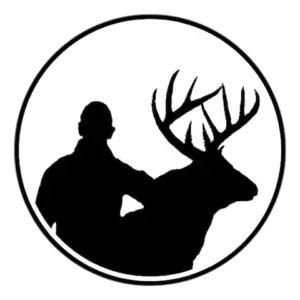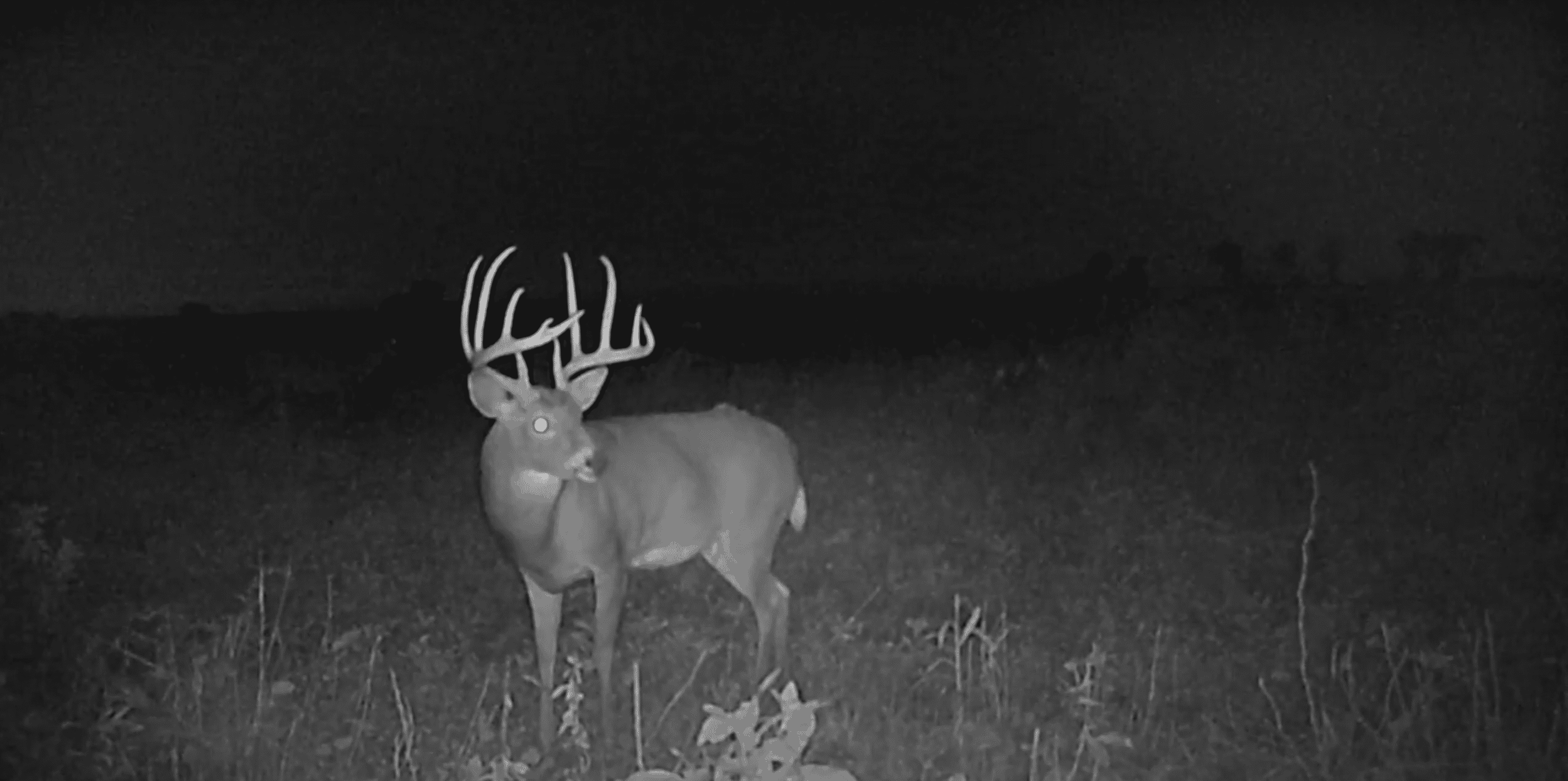Big bucks leave clues about their presence in many different forms. Seeing a giant buck in person is an obvious way to identify that he is living in the area, but the best way to learn about a big bucks presence is by using trail cameras. The majority of serious big buck hunter’s use trail cameras to locate big bucks so they know where, and where not, to hunt them. Experienced hunters also study buck sign such as tracks, rubs, shed antlers, and buck beds to hone in on a bucks core area.
What is a big buck?
A big buck can be defined several different ways. Boone & Crockett, and Pope & Young are terms that hunters throw around a lot when talking about big bucks. I think it’s important to define a big buck based on the area that he is located. I’m not just talking about the state where the buck is, or a specific county within that state. I’m talking about specific neighborhoods within a county.
Being from Illinois and hunting in many different Illinois counties, and neighborhoods within those counties, I’ve learned first hand that quality and quantity changes from neighborhood to neighborhood. Not every remote Illinois property has a 300lb Boone and Crockett buck living near by. Trail camera history or harvest history is one of the best ways to understand what a specific neighborhood has to offer. If you have done your homework scouting and talking with your neighbors, then you should have a pretty good idea how to define a “big buck” for your area. If you aren’t familiar with a neighborhood then go knock on some doors where you think people might hunt and introduce yourself as a fellow hunter. You will be amazed at the information you can learn from people who love showing off the bucks they killed or got pictures of.
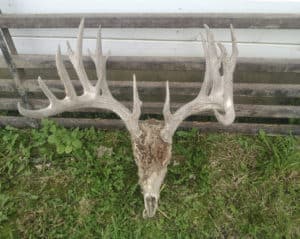
When I was looking to buy my hunting property, the farmer next door drove by and stopped to talk to me after I toured the property the first time. I asked him how the hunting was in the area and if he had any good pictures of bucks in the neighborhood. He responded with a story of a giant deer skull that he found. I assumed at the time that his story over-exaggerated the size of the rack, however the farmer invited me to come see the deadhead for myself and I was able to capture this picture of the buck. Imagine my excitement after learning about the genetics in the area. That buck died a few hundred years from the boarders of my property so odds were good he was using my property.
How to find big bucks
Big bucks aren’t hanging out in every woodlot, drainage ditch, or thick cover area. So how do we find them? Scouting! There are a lot of strategies to scout for giant whitetails and locate them. Implementing all of the following strategies is the best way to locate a big buck if he is in your area.
Trail camera’s
Trail cameras are one of the best ways to learn about the quality and quantity of deer in a neighborhood. If you are seeking to define what a big buck is for an area, all you have to do is hang your trail camera’s in the highest deer traffic area that you can easily access without being too intrusive on the deer. You will likely get your big buck pictures taken at nighttime but that doesn’t matter at this point. We are just trying to learn what a big buck is for that area so whether a picture is taken at night or during the day doesn’t matter. Just focus on learning about the quality and quantity of deer.
First hand observation
Scouting from the road with a spotting scope or a pair of binoculars is an efficient way to locate big bucks in your area. Giant whitetails don’t hide themselves very well during the summer months when antlers are in velvet. This is an ideal time for you to get your eyes on a giant buck. Locate food sources within a mile or two from where you hunt, and take a drive around to look for bucks in your neighborhood. The deer might not be on your property but you can learn a lot by scouting surrounding properties from the road. And chances are that those deer will be on your property at some point during the season, especially if you have food, cover, or both on your property.
You may also learn about big bucks from other people’s observations such as a neighbor or a farmer. Make sure you consider the source when you get information about a big buck from another person. Someone might say they saw a 170″ buck when that buck is actually just 140″. If you are an out-of-state hunter or are not able to spend much time scouting in the field for yourself, then finding trusted sources where you can gain intel on big bucks is extremely helpful in finding giant bucks. I have heard of people getting sent on a wild goose chase and end up spending a lot of time hunting a buck that never existed.
Big Rubs
I define a big rub by the size of the tree, fence post, or even telephone pole. The diameter of the tree or post should be at least six inches wide. I have seen small bucks rub on six-inch diameter trees and posts, but they don’t do the kind of damage that a big antlered buck can make. Also, big antlered bucks don’t always make big rubs. Bucks all have different personalities. You could have one big buck that uses a lot of aggression while rubbing trees, and another big buck that is extremely timid and barely makes rubs at all. A surefire way to tell if a rub was made by a big antlered buck is if the tree has a wide diameter and is completely shredded from knee to shoulder height (assume a 6′ tall person).
Shed antlers
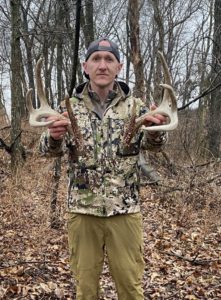
Whitetails shed their antlers and grow a new set every year. They typically shed their antlers between the months of December and April. Finding a big buck shed is immediate proof that a buck is in your area and most likely survived to the end of hunting season. Finding shed antlers can be tough, especially if you don’t have the food or don’t have the cover close to food sources where deer are feeding during the winter months. If you do search for sheds, make sure to look for them when snow isn’t on the ground so that the white antlers stand out better for you to recognize.
Tracks
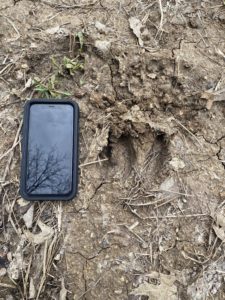 Big buck tracks don’t lie. A big track is typically as wide as your hand or wider. If you want to get a good understanding of big buck tracks then my recommendation is finding a wet muddy area that a lot of deer travel through and study all of the different tracks. Big buck tracks will stand out from the rest.
Big buck tracks don’t lie. A big track is typically as wide as your hand or wider. If you want to get a good understanding of big buck tracks then my recommendation is finding a wet muddy area that a lot of deer travel through and study all of the different tracks. Big buck tracks will stand out from the rest.
Another way to understand deer tracks is to visit a deer processor during hunting season and study all of the deer’s hooves. Try to time your visit during the end of the rut or at the end of gun season so you can study a high number of deer hooves. Examine the does, fawns, yearly bucks, and old bucks feet. The old bucks feet will be wider and bigger than the rest of the herd.
Buck Beds
If you can find a big buck bed, or multiple beds, then you hit gold if you’re trying to kill a big buck. Identify as many buck beds that you can so that you have multiple beds to hunt over and rotate hunting locations so you aren’t putting too much hunting pressure on one location. Locating a big buck bed and hunting him near it, is arguably the best way to kill a mature buck outside of the rut. As a matter of fact, your rut hunting tactics should be slightly different than your non-rut hunting tactics if your goal is to kill a big mature buck.
Where do big bucks bed?
Unless it’s the rut, big bucks typically don’t bed right next to does. Some bucks might stay in the same general area the does are and others will bed 1-3 miles away or more. Bucks will keep a certain distance from does based on their unique personalities. Big bucks still need to feed and will do so in the same areas as does especially if there is a destination food source in the area. All deer will gravitate to destination food sources during evening hours or at night. Buck beds could be right next to food sources or several miles away. Where a big buck beds is very situational and a bucks personality will also play a role in determining his bedding routine.
Mature bucks will bed where they feel the safest. They have a way of finding secure bedding areas that humans rarely intrude on. You typically won’t find heavily used deer trails leading to the area where a mature buck beds. One set of big tracks heading into a location where you typically don’t see does is a great place for a big buck bed. That’s definitely the kind of spot that I look for when searching for a good place to hang a trail camera. I will hang my camera on the perimeter of his expected bedding area in hopes of catching him entering or exiting the area to confirm the size of his rack. Once I confirm it’s a mature buck that I want to hunt, I will wait for ideal weather conditions and move in for the kill.
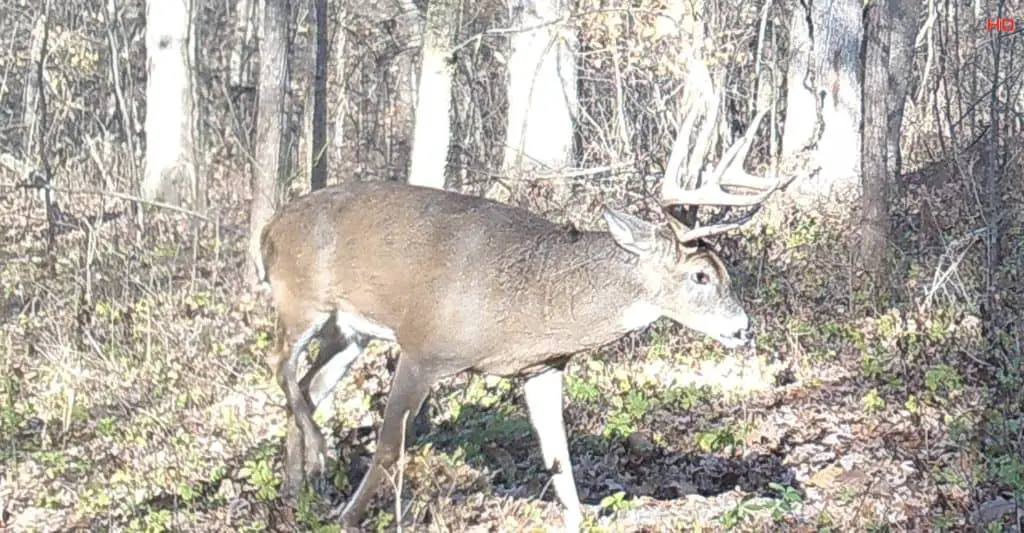
How to find a bucks core area?
A buck’s core area is where he spends the majority of his daylight hours. If you can consistently see a buck or get daylight trail cam pics of him, then you are in that bucks core area. Consistency is not just getting his picture a couple times in a single week and then never seeing him again. Consistency means you are getting several daylight pictures or having encounters with him over a large duration of the hunting season for at least several weeks. When I get 1 or 2 daylight pictures of the same buck every week for several weeks in a row, I know I’m in the buck’s core area.
Finding a bucks core area can be extremely hard to find unless you are hunting a large chunk of public ground or have access to several hundred or thousands of acres. Hopefully you are lucky enough that a buck’s core area is already where you are hunting or have permission to hunt. Most of the time, that doesn’t seem to be the case. If you have the ability to track down a buck’s core area based on the size of ground you have to hunt, then the process of finding him is a lot of fun.
When you track down a specific bucks core area, you already have some kind of information that the bucks exists. Either you saw the deer while scouting, got him on your trail camera, or someone else told you about him. The majority of hunters today are scouting with trail cameras so the odds would say you probably found out about a buck from a trail camera picture. If you got a bucks picture at night try to analyze that photo or video the best you can. Try to determine the direction that the buck came from and the time of night that he passed by the camera. This is an important part of tracking down a buck’s core area.
Let’s assume it gets dark at 6pm and you got his picture taken at midnight (6 hours after dark). For every 2 hours from dark, add 1 mile of distance in the direction that you think the deer came from and find key spots you expect a big buck might be bedding. In our example, you would search for areas around 3 miles in the general direction that you believe the buck came from. If the topography of the area is really hilly then you can reduce the distance. Try 2 miles instead.
This method of finding a big buck core area is an imperfect science. To dumb it down, you should try to triangulate the buck to narrow down his core area through a process of elimination. Sometimes you get lucky and find his core area quick and sometimes it takes years. The good news is that deer will continue to use the same core areas every year as long as nothing major changes his habits, such as hunting pressure, or the habitat he lives in. The more trail cameras you are able to use the better your odds are in finding your bucks core area and doing it in a faster amount of time.
Conclusion
The definition of a big buck is defined differently for each neighborhood within the county that you are focused on. If you have put in the work scouting for big bucks, then you should have a decent idea of the quality of bucks that exists where you plan to hunt.
Finding big bucks is a whole lot easier today than it was in the past. Reading articles like this helps educate hunters about strategies that can be used to find and kill a buck of a lifetime.
Using all of the scouting techniques mentioned in this article will help increase your odds of getting one step closer to finding a bucks core area and where he beds. One of the best ways to kill a specific big buck is to find his beds.
Trail cameras are arguably the best tool for scouting deer and identifying a bucks core area. Most hunters don’t spend all day in the field scouting, so if you are trying to track down a mature buck utilize several trail cameras to do your scouting for you while you are away. This is the most effective way to tell if a big buck is in your neck of the woods.
